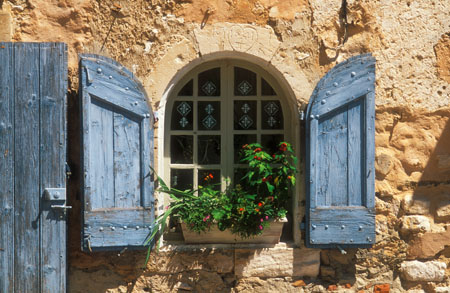When visiting grand buildings such as palaces, cathedrals and temples look not only at the entirety of the structures but also for the myriads of small details. Gargoyles, wood carving, capitals in colonnades, doors, windows and even details such as door hinges and knockers, go some way towards defining the architectural style. The secret is to get in close to the chosen subject and isolate it from its surroundings. The viewer must be left in no doubt about what you were photographing.
 Detailed work that makes interesting and sometimes graphic compositions is unfortunately often located high up, making a suitable viewpoint difficult to find. In many cases the subject may be accessible only through a telephoto lens angled steeply upwards. This rather extreme angle of view can be rendered unattractive by converging verticals, the low viewpoint and inappropriate lighting. Possible solutions include using a longer telephoto lens from a greater distance, and finding a higher viewpoint perhaps in a neighbouring building.
Detailed work that makes interesting and sometimes graphic compositions is unfortunately often located high up, making a suitable viewpoint difficult to find. In many cases the subject may be accessible only through a telephoto lens angled steeply upwards. This rather extreme angle of view can be rendered unattractive by converging verticals, the low viewpoint and inappropriate lighting. Possible solutions include using a longer telephoto lens from a greater distance, and finding a higher viewpoint perhaps in a neighbouring building.
Lighting is important and for best results must be suited to the subject. Three dimensional objects such as sculpture and relief work benefit from side-lighting because the interplay of highlight and shadow highlights form and texture. Plane surfaces such as murals and tile mosaics are better viewed in diffused light, particularly where colour is a significant part of the composition. Hues will be more saturated and reflections are less likely to be a problem. Warm light from the setting sun flatters many subjects by bestowing golden tones and strong shadows. Such effects do not last long, so find the subject and be ready before the sun sets.
Modern buildings may invite a rather more graphic or abstract approach. Architects delight in using strong shapes in unusual ways, and surfaces such as polished metal, tinted glass and exposed structural steel. Look carefully for interesting angles, shapes and colours and don’t be afraid to experiment with extreme angles of view and unconventional compositions.






